
How to Use Turbidity Module: Examples, Pinouts, and Specs
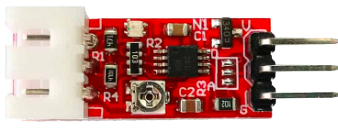
 Design with Turbidity Module in Cirkit Designer
Design with Turbidity Module in Cirkit DesignerIntroduction
A Turbidity Module is an electronic sensor designed to measure the turbidity, or cloudiness, of a liquid. Turbidity is an important parameter in assessing water quality, as it can indicate the presence of pollutants, suspended solids, and microorganisms. This sensor is commonly used in environmental monitoring, water treatment, and laboratory analysis to ensure safe drinking water and to monitor the health of aquatic ecosystems.
Explore Projects Built with Turbidity Module
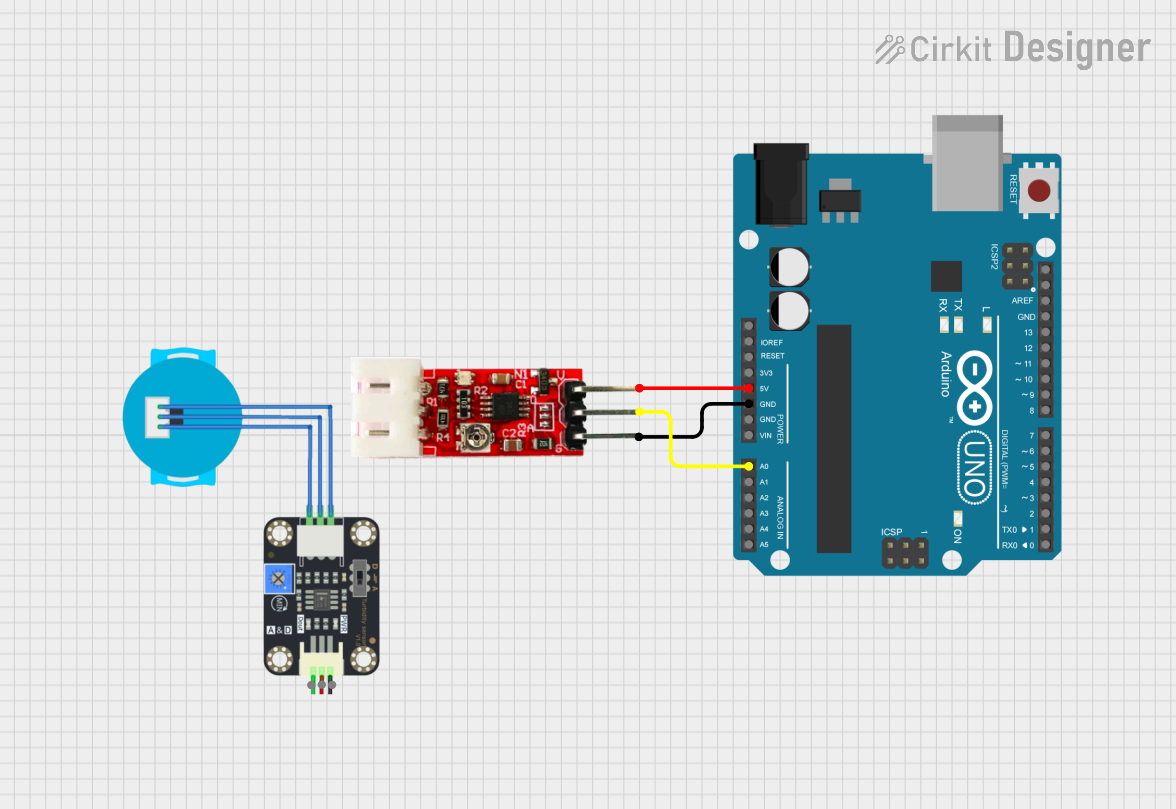
 Open Project in Cirkit Designer
Open Project in Cirkit Designer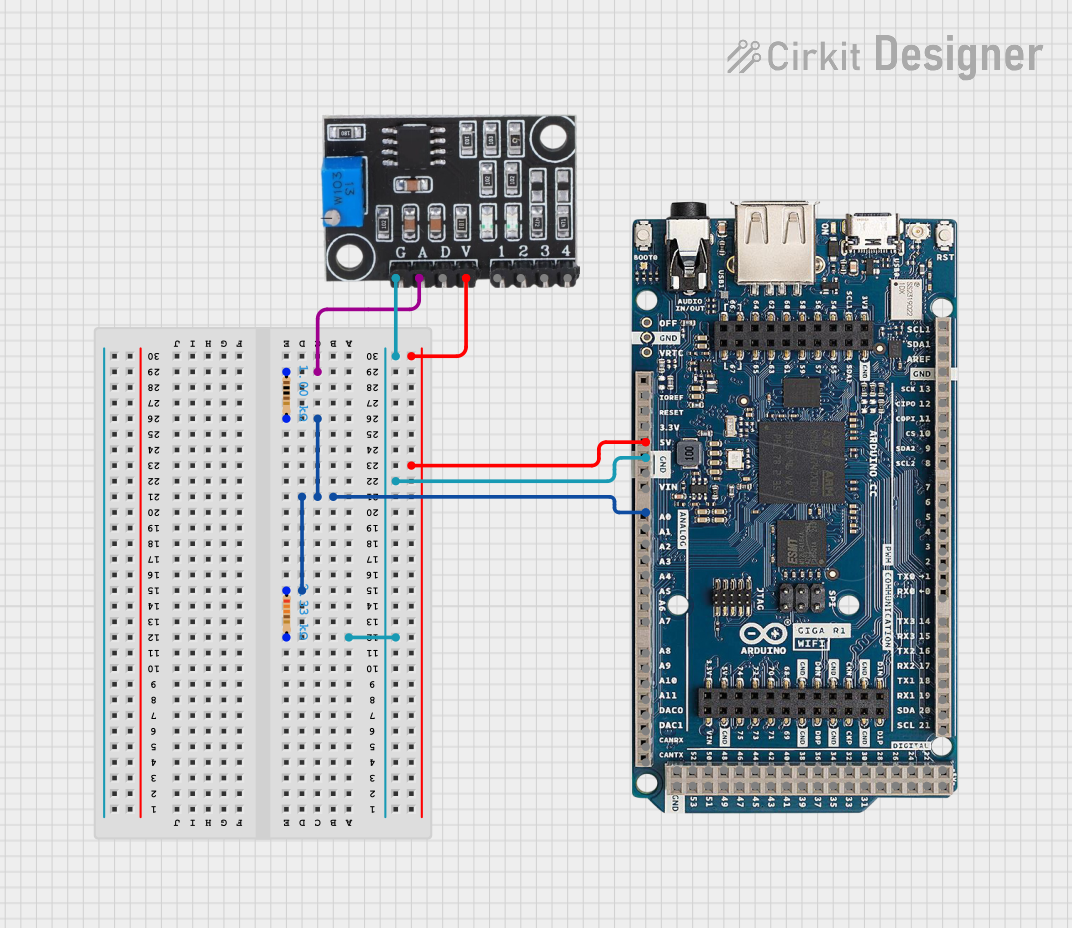
 Open Project in Cirkit Designer
Open Project in Cirkit Designer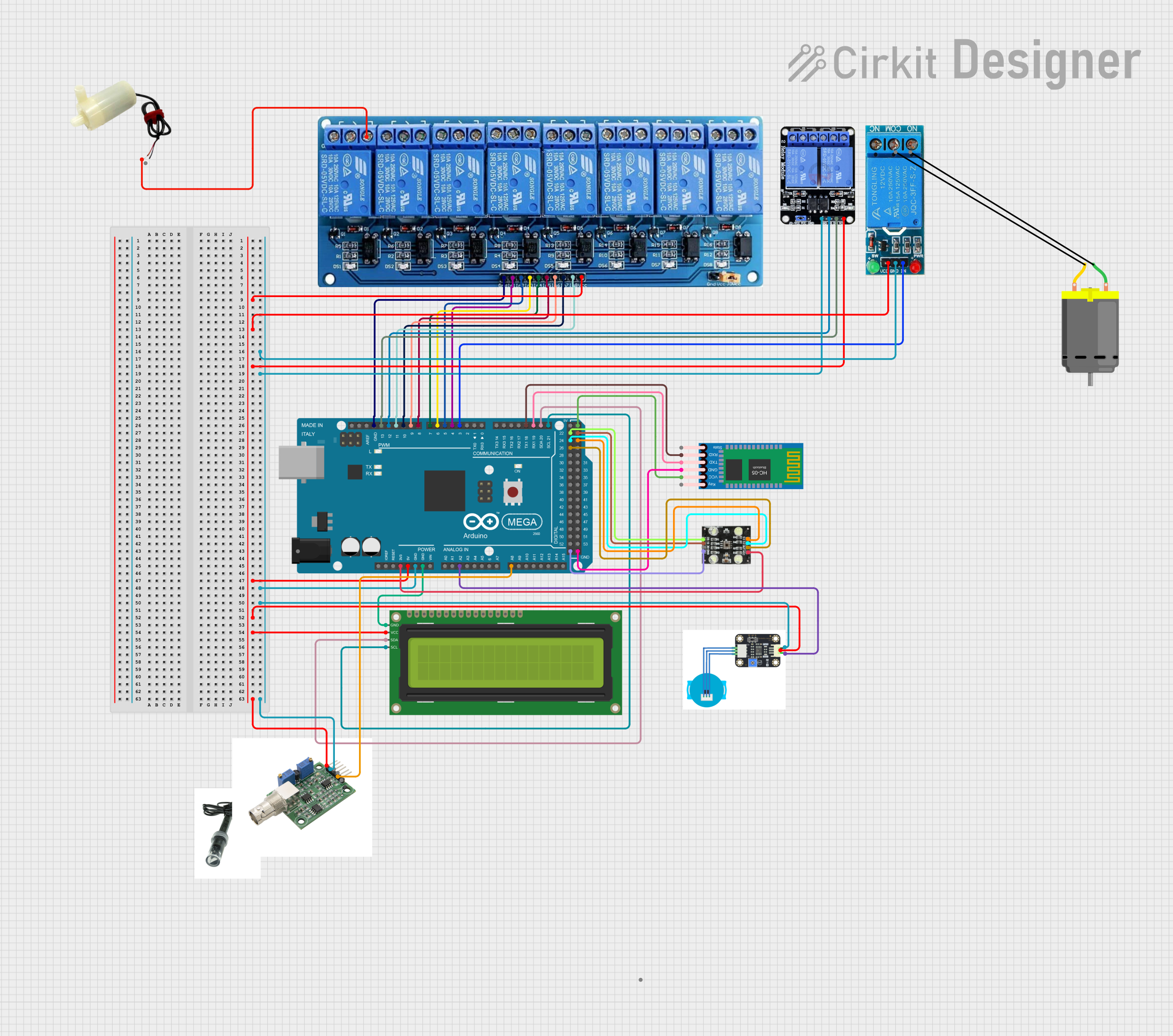
 Open Project in Cirkit Designer
Open Project in Cirkit Designer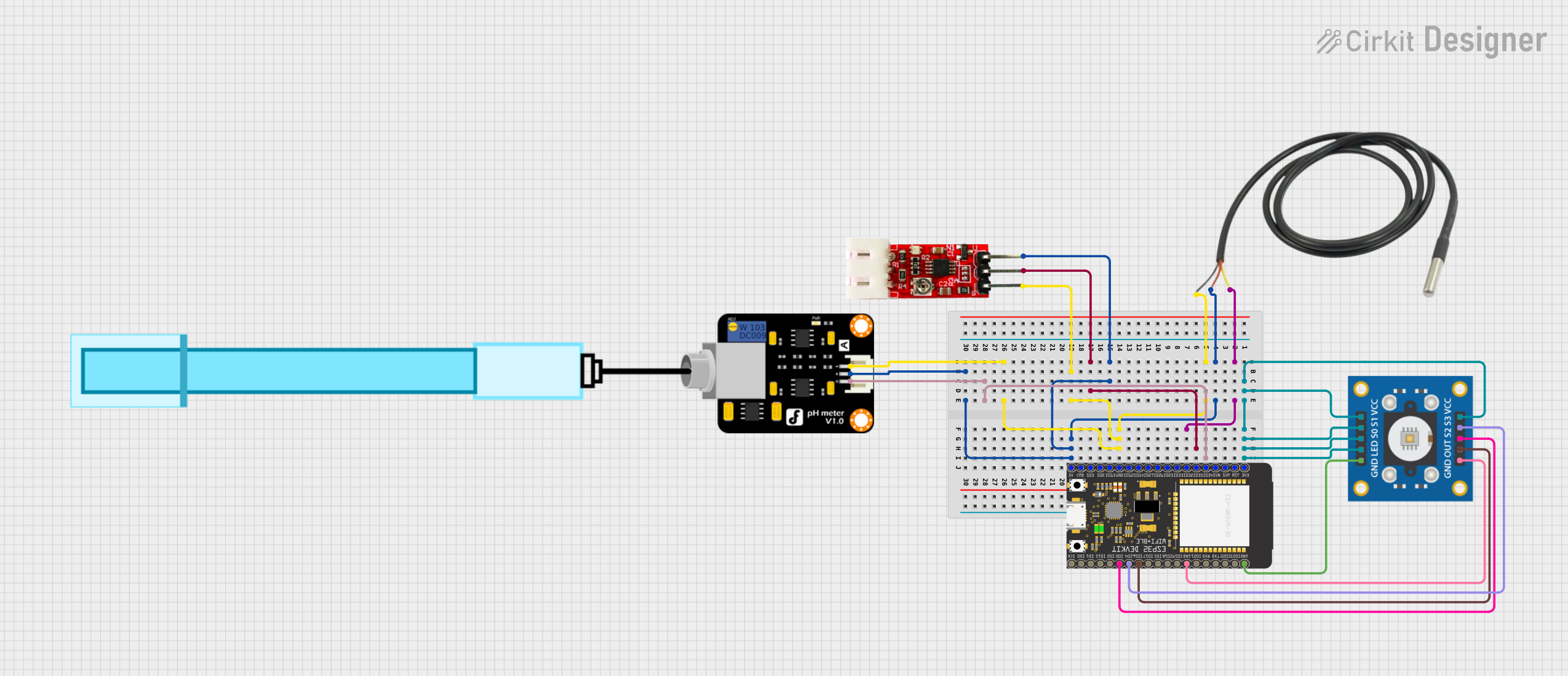
 Open Project in Cirkit Designer
Open Project in Cirkit DesignerExplore Projects Built with Turbidity Module

 Open Project in Cirkit Designer
Open Project in Cirkit Designer
 Open Project in Cirkit Designer
Open Project in Cirkit Designer
 Open Project in Cirkit Designer
Open Project in Cirkit Designer
 Open Project in Cirkit Designer
Open Project in Cirkit DesignerCommon Applications and Use Cases
- Water quality testing for drinking water
- Environmental monitoring in rivers, lakes, and streams
- Wastewater treatment processes
- Aquaculture systems to ensure the health of aquatic life
- Industrial processes that require clean water input or discharge
Technical Specifications
Key Technical Details
- Operating Voltage: 5V DC
- Operating Current: 30mA (typical)
- Measurement Range: 0 to 3000 NTU (Nephelometric Turbidity Units)
- Accuracy: ±5% of reading or 0.5 NTU (whichever is greater)
- Response Time: <500ms
- Output Signal: Analog (0-4.5V)
Pin Configuration and Descriptions
| Pin Number | Name | Description |
|---|---|---|
| 1 | VCC | Power supply (5V DC) |
| 2 | GND | Ground connection |
| 3 | AOUT | Analog output signal |
| 4 | LED | Indicates power and operation status |
Usage Instructions
How to Use the Component in a Circuit
- Connect the VCC pin to a 5V power supply.
- Connect the GND pin to the ground of the power supply.
- Connect the AOUT pin to an analog input on a microcontroller, such as an Arduino UNO.
- Ensure that the sensor is properly submerged in the liquid to be tested without touching the bottom or sides of the container.
Important Considerations and Best Practices
- Avoid exposing the sensor to direct sunlight or high-intensity light sources, as this can affect the readings.
- Regularly clean the sensor to prevent buildup of debris, which can impact accuracy.
- Calibrate the sensor periodically using standard turbidity solutions to maintain measurement accuracy.
- Implement a stable power supply to prevent fluctuations that could cause erroneous readings.
Example Code for Arduino UNO
// Define the analog pin connected to the sensor's output
const int turbidityPin = A0;
void setup() {
// Initialize serial communication at 9600 baud rate
Serial.begin(9600);
}
void loop() {
// Read the analog value from the turbidity sensor
int sensorValue = analogRead(turbidityPin);
// Convert the analog value to voltage
float voltage = sensorValue * (5.0 / 1023.0);
// Print the voltage to the Serial Monitor
Serial.print("Turbidity Voltage: ");
Serial.println(voltage);
// Delay for a stable reading
delay(1000);
}
Troubleshooting and FAQs
Common Issues Users Might Face
- Inaccurate Readings: Ensure the sensor is clean and calibrated. Check for any electrical noise or interference in the circuit.
- No Readings: Verify that the sensor is correctly powered and that all connections are secure. Check the analog pin for proper communication with the microcontroller.
- Fluctuating Readings: Stabilize the liquid being measured to avoid rapid changes in turbidity. Ensure a consistent power supply.
Solutions and Tips for Troubleshooting
- If the sensor is not responding, check the power supply and wiring connections.
- For fluctuating readings, implement a moving average in the code to smooth out the data.
- If the sensor is still not functioning correctly, replace it as it may be damaged.
FAQs
Q: Can the turbidity module be used in saltwater? A: Yes, but ensure that the sensor is rated for use in saline environments to prevent corrosion.
Q: How often should the sensor be calibrated? A: Calibration frequency depends on usage, but it is generally recommended to calibrate the sensor every few months or after any maintenance.
Q: What is the best way to clean the sensor? A: Use distilled water and a soft brush to gently clean the sensor. Avoid using harsh chemicals that could damage the sensor's optical components.